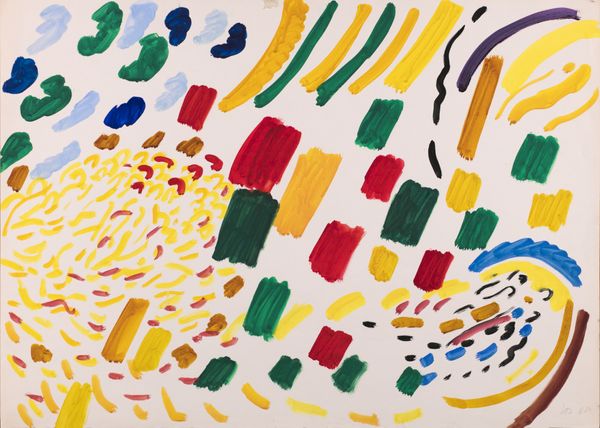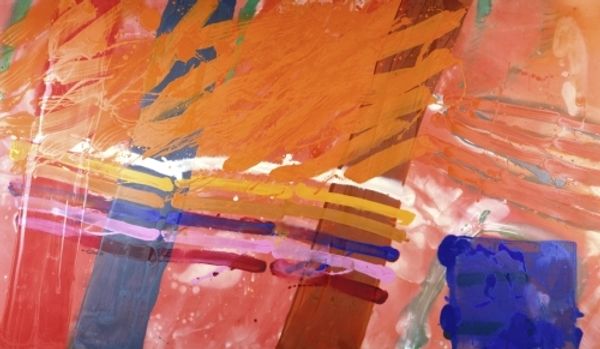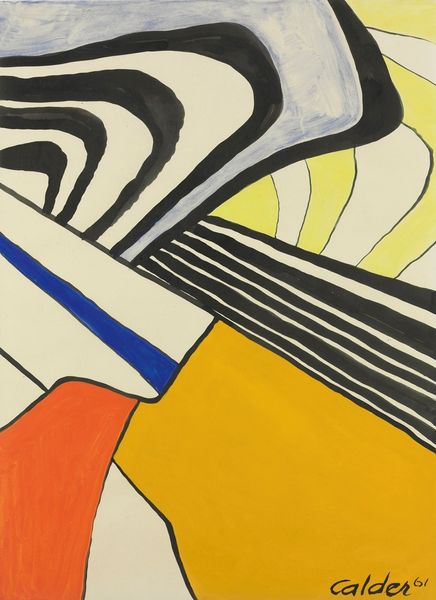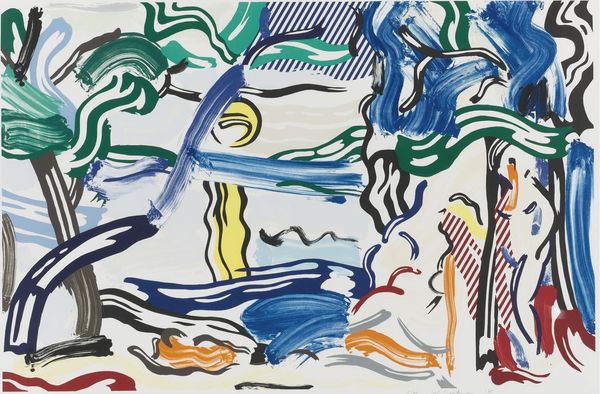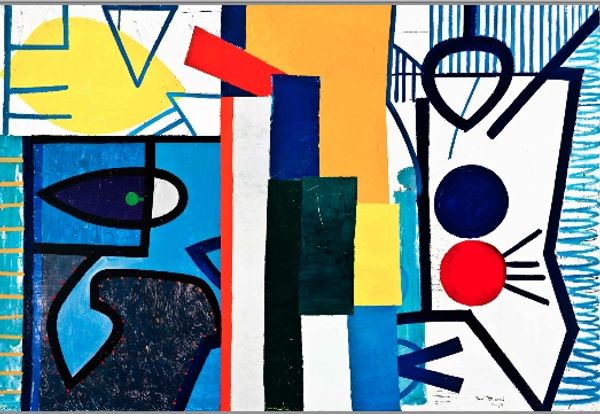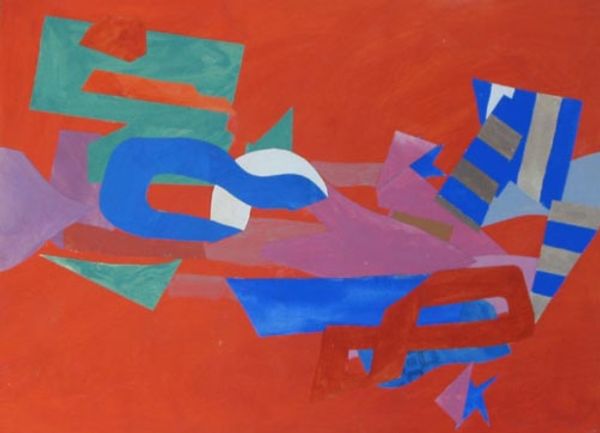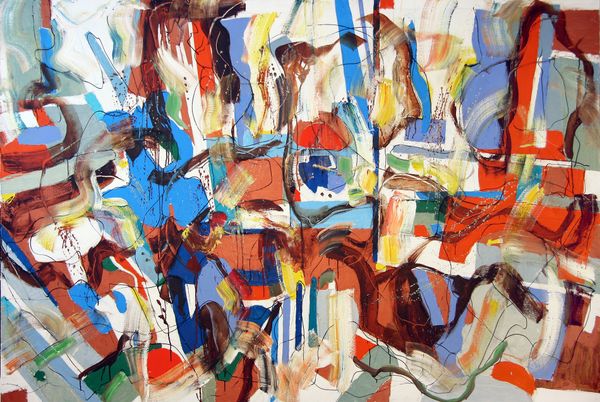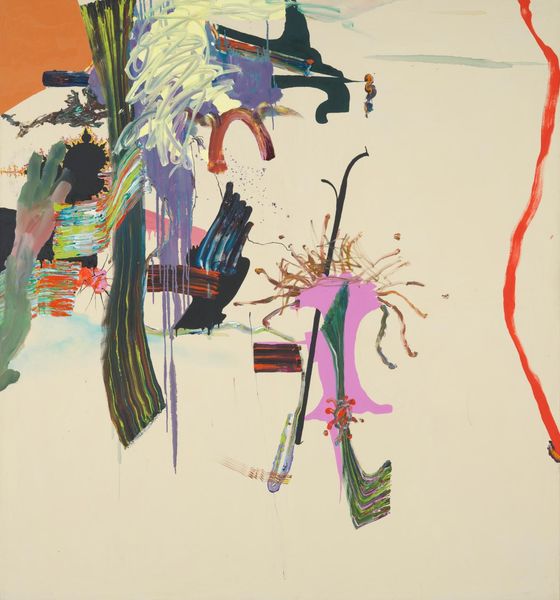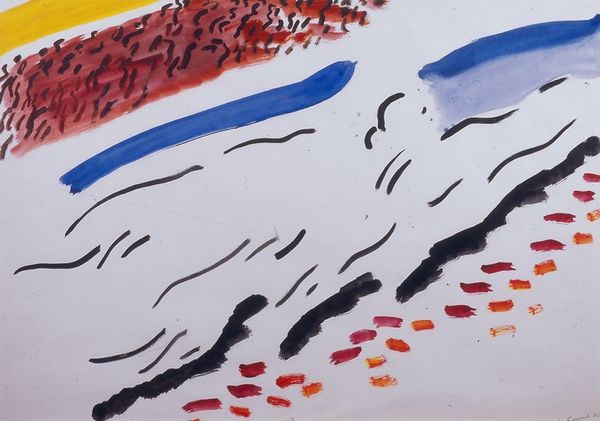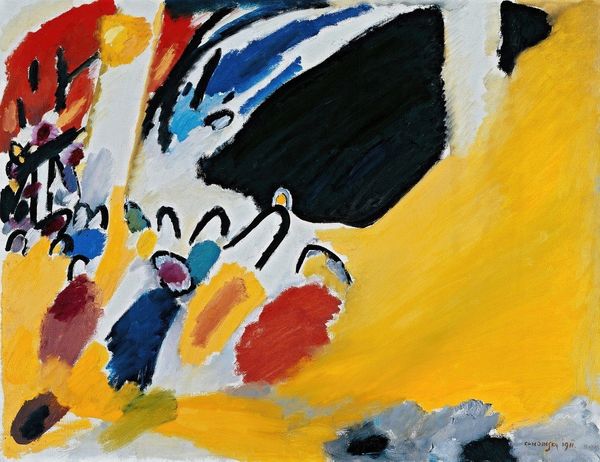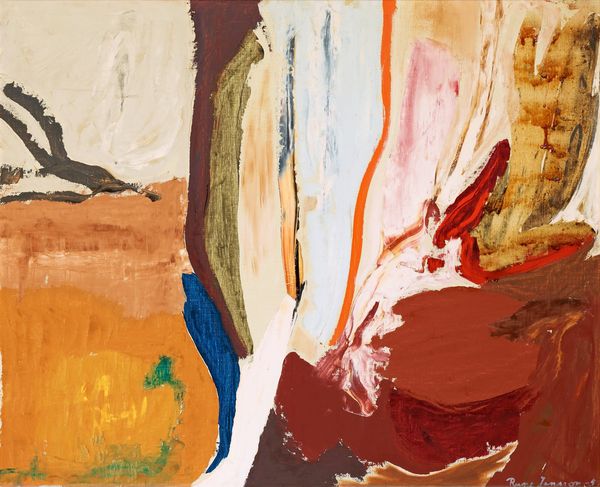
painting, acrylic-paint
#
abstract-expressionism
#
abstract painting
#
painting
#
pattern
#
acrylic-paint
#
geometric
#
abstraction
#
line
Copyright: Yuri Zlotnikov,Fair Use
Curator: Standing before us is Yuri Zlotnikov's "Antithesis to Malevich's Black Square," created in 1958. A fascinating work of abstract expressionism, it's a painting rendered with acrylic paint, presenting a dynamic pattern of geometric forms. Editor: It immediately strikes me as almost playful. Compared to the gravity often associated with abstract expressionism, there's a lightheartedness here. The bright colours and fragmented composition prevent it from feeling oppressive despite the clear reference to Malevich's more stark, monumental work. Curator: It is intriguing how Zlotnikov positions this painting within the larger context of art history and socio-political meaning-making, in particular with respect to Malevich’s black square. He is intentionally responding to and, as the title suggests, contradicting it. To analyze this in terms of politics, one can interpret it as an attempt to free oneself from the constraints of conventional ideologies. The very geometric forms rebel against imposed social patterns. Editor: Right, and one could see it as reflecting the evolving role of art in the Soviet Union at the time. Think about the changing social landscape. Is Zlotnikov pushing back against the rigidity of socialist realism? I see his abstraction as inherently political—a silent yet assertive act. Curator: Absolutely. Zlotnikov, along with other artists, challenged the prescribed artistic doctrines by embracing abstract styles and delving into subjective experiences. The painting functions as a critical lens, inviting dialogue about how art can both reflect and challenge established norms, and also create space for a new definition of art. In that new vision of art we can see patterns and brush strokes liberated from the boundaries of clear symbolic meaning. Editor: But I'm drawn to the central black square. While it nods to Malevich, surrounded by those vibrant brushstrokes, it loses its severity, and is set against an intentional aesthetic, almost as a relic from the past. What kind of role does geometry play in constructing one's cultural identity? I mean, if geometry reflects rationalism, then, maybe it reflects authority itself... Curator: Yes, and it urges us to reflect on what gets sacrificed in the name of authority and cultural narratives. The deliberate use of an antithesis in his work, I think, urges viewers to challenge the meaning, assumptions, or narratives with which they are already familiar. Editor: What I take away is that while Zlotnikov engages with art history, his work is not just an homage, it's a repositioning. It forces the viewer to reflect upon historical contexts, ideologies and shifting paradigms of art history. Curator: And for me, this shows us how the socio-political narratives we are confronted with can always have alternate meanings or outcomes, ones that are fluid and full of expression.
Comments
No comments
Be the first to comment and join the conversation on the ultimate creative platform.

